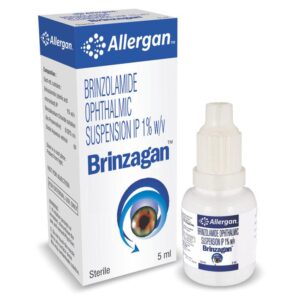OPHTHALMIC NEEDLES AND SUTURES + BRINZOLAMIDE
Ophthalmic Needles And Sutures: Ophthalmic needles and sutures are used in ophthalmic surgeries to suture incisions and close wounds in the eye. They are specifically designed for delicate eye tissues and provide excellent closure to prevent leakage of fluids and promote healing.
The mechanism of action of ophthalmic needles and sutures involves the use of a needle to pass the suture material through the tissues and then tie them to secure the wound. The suture material can be made of various materials such as silk, nylon, or absorbable materials like polyglactin or polyglycolic acid. The type of suture material used depends on the surgeon’s preference and the specific needs of the surgery.
The dose of ophthalmic needles and sutures varies depending on the specific surgical procedure being performed. The surgeon selects an appropriate needle size and suture material based on the complexity of the surgery and the type of tissue being sutured.
As with any surgical procedure, there are potential side effects associated with the use of ophthalmic needles and sutures. These can include:
1. Infection: There is a risk of infection at the site of the sutures, which can lead to localized redness, swelling, and pain.
2. Tissue reaction: Some individuals may have an allergic or hypersensitivity reaction to the suture material, resulting in inflammation or swelling.
3. Suture complications: There is a possibility of sutures becoming loose or breaking, which may require additional surgical intervention to address.
4. Scarring: Depending on the size and location of the incision, scarring may occur. The severity of scarring can vary from mild to more noticeable.
It’s important to note that ophthalmic needles and sutures should only be used by trained healthcare professionals in a sterile environment. Proper technique, wound care, and follow-up are crucial to minimize complications and ensure the best possible outcomes for patients.
Brinzolamide: Brinzolamide is a medication commonly used to treat open-angle glaucoma and ocular hypertension, a condition characterized by increased pressure within the eye. It is available as an ophthalmic suspension, which is instilled into the eye for local action.
The mechanism of action of brinzolamide involves the inhibition of carbonic anhydrase II enzyme in the ciliary processes of the eye. By inhibiting this enzyme, it reduces the production of aqueous humor, the fluid that fills the front part of the eye. This helps to lower the intraocular pressure and prevent damage to the optic nerve.
Typically, brinzolamide is prescribed to be used one drop in the affected eye(s) three times daily. The dosage may vary, and it is important to follow the instructions provided by the healthcare professional. It is essential to wash hands before instilling the eye drops and avoid touching the dropper tip to prevent contamination. Contact lenses should be removed before administering the medication and can be reinserted 15 minutes after its use.
Like any medication, brinzolamide may cause side effects. Commonly observed side effects include a bitter or unusual taste in the mouth, blurred vision, dry eyes, eye discomfort or itching, and a feeling of something in the eye. These side effects are usually temporary and not serious. However, if any severe side effects such as eye pain, swelling, redness, or vision changes occur, it is crucial to seek medical attention.
Brinzolamide is generally well-tolerated, but it is important to inform one’s healthcare provider about any existing medical conditions, allergies, or medications being taken, as some interactions and contraindications may apply. Regular eye check-ups are also recommended to monitor the effectiveness of the medication and manage any potential complications associated with glaucoma.

